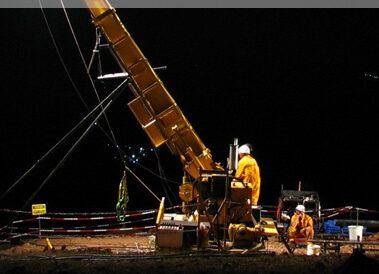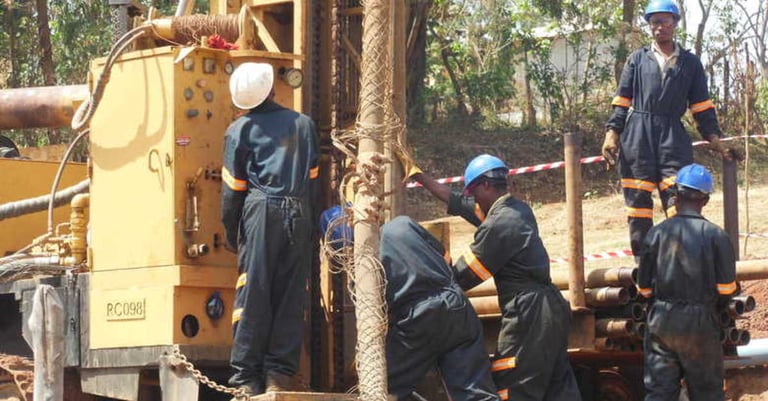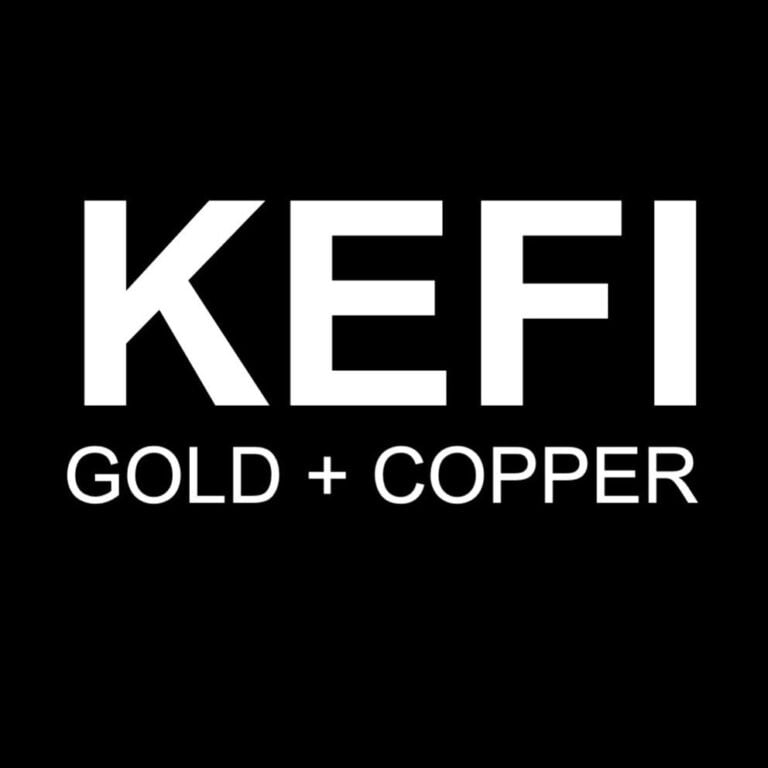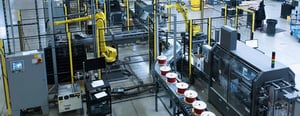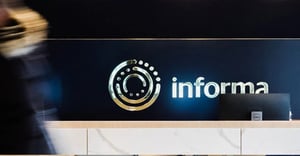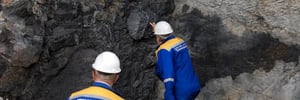KEFI (AIM: KEFI), the gold and copper exploration and development company with projects in the Federal Democratic Republic of Ethiopia and the Kingdom of Saudi Arabia, is pleased to announce its audited financial results for the year ended 31 December 2022.
AGM and Annual Report
As announced on 2 June 2023 the Annual General Meeting (“AGM”) of the Company will be held at 11:00 a.m. (EEST) (9:00 a.m. BST) on 30 June 2023 at Hilton Park Nicosia,1 Achaion Street, Engomi, Nicosia, 2413, Cyprus. The notice of AGM has been posted to shareholders and is available from the company website.
The Annual Report and Accounts for the year ended 31 December 2022 is available below:
EXECUTIVE CHAIRMAN’S REPORT
After some particularly frustrating years, the working environment in both Ethiopia (security and regulatory) and Saudi Arabia (regulatory) was transformed for the better during 2022. In Ethiopia, we are finally close to launching the Tulu Kapi Gold Project this year. And as we advance in both countries with an early-mover position, we can now expect to report an escalating stream of achievements. What a welcome outlook after years of challenge and frustration!
We now enjoy highly supportive mine-regulatory working environments in both countries which are also prioritising projects like ours across all the relevant Government agencies. Given that we have three advancing potential development projects in these jurisdictions, the Company is now in a much better risk/return position than it has ever been. It is indeed a refreshing change and an exciting opportunity.
Financial markets, and the AIM Market in particular, have shown some volatility and weakness flowing from global and UK political events. This has reinforced KEFI’s strategy of sourcing predominantly project-level and subsidiary-level project financing.
At the same time, both the Saudi and Ethiopian local equity capital markets have shown particular interest in natural resources, as have the Canadian and Australian mining-focused stock markets. KEFI has appointed advisers to consider a dual-listing of the Company’s shares on major regional or mining-focused stock exchanges.
Successful implementation of our plans will result in KEFI being a leader in the Arabian-Nubian Shield with projected 2027 aggregate annual production of 327,000 gold-equivalent ounces, in which KEFI will have a beneficial interest of 150,000 gold-equivalent ounces. These estimates reflect resources as they stood at 2021 and current preliminary assessments.
Our reported Mineral Resources provide a solid starting position for growth. Since mid-2020, KEFI’s beneficial interest in the in-situ metal content of our three projects has grown from 1.2 million gold-equivalent ounces to approximately 2.1 million gold-equivalent ounces. KEFI’s current market capitalisation of circa £40 ($50) million equates to only $24 per gold-equivalent ounce.
The growth in Mineral Resources is due to our progress in Saudi Arabia in particular, where GMCO is now well-established as a leading explorer/developer in the fast-emerging Saudi minerals sector with:
| · | one of the largest exploration teams in the country; and | |
| · | two major projects advancing towards development: | |
| o | Hawiah Copper Gold Project at the Pre-Feasibility Study (‘PFS’) stage; and | |
| o | Jibal Qutman Gold Project at the Definitive Feasibility Study (‘DFS’) stage. | |
GMCO’s growth has coincided with the Saudi Government’s widely publicised recent initiatives to welcome international expertise and fast-track the growth of its mining sector. In the past year or so, we have been awarded 14 Exploration Licences (“ELs”), many times the number we were awarded over the previous thirteen years.
A notable reason for our solid position in the region is our alliancing strategy. Our operating alliances are with the following strong organisations:
| · | Partners: | ||
| o | in Saudi Arabia: Abdul Rahman Saad Al Rashid and Sons Company Ltd (“ARTAR”) | ||
| o | in Ethiopia: | ||
| § | Federal Government of the Democratic Republic of Ethiopia | ||
| § | Oromia Regional Government | ||
| · | Principal contractors: | ||
| o | for process plants in both Ethiopia and Saudi Arabia: Lycopodium | ||
| o | for mining services in Ethiopia: PW Mining | ||
| · | Senior project finance lenders for Tulu Kapi: | ||
| o | East and Southern African Trade and Development Bank Ltd (“TDB”) | ||
| o | African Finance Corporation Limited (“AFC”) | ||
Ethiopia – Tulu Kapi
Having essentially overcome its recent security issues, Ethiopia is demonstrating a clear determination to expedite economic recovery and once again be among the world’s top 10 growth countries, as it was for nearly 20 years up to 2017. A key part of the Ethiopian Government’s strategy to achieve this strong growth is for the mining sector to increase from 1% of GDP today to 10% of GDP ten years from now. The Federal Government recently deployed its world-recognized military around priority mining sites such as Tulu Kapi and announced a number of incentives such as lower royalty rates to reinforce its commitment to protect, support and encourage our industry.
Tulu Kapi will be the country’s first large-scale mining project for some 30 years and is designed to the highest international standards. It therefore is imposing many demands on a regulatory system which the Ethiopian Government is upgrading.
There is significant potential to increase Tulu Kapi’s current Ore Reserves of 1.05 million ounces of gold and Mineral Resources of 1.7 million ounces. Economic projections for the Tulu Kapi open pit indicate the following returns assuming a gold price of $1,815/ounce:
| · | Average EBITDA of $153 million per annum (KEFI’s now planned c. 70% interest being c. $107million); |
| · | All-in Sustaining Costs (“AISC”) of $947/ounce (note that royalty costs increase with the gold price); and |
| · | All-in Costs (“AIC”) of $1,189/ounce. |
The assumptions underlying these projections are detailed in the footnotes to the table on page 10 of this Annual Report.
Saudi Arabia – Jibal Qutman
Whilst GMCO has been on the ground since 2008, mining de-regulation was only implemented over the past two years. This has led to a surge in companies looking to enter the Saudi minerals sector and one recent entrant has announced one of the largest exploration programs ever committed anywhere – testament to the international rating of the Saudi prospectivity. KEFI’s beneficial interest is planned to be 26.8% in GMCO and the shareholders’ agreement provides extra flexibility on a project-by-project basis by catering for the possibility that one or other GMCO project can be sole-risked by either shareholder if one partner chooses to opt out.
Jibal Qutman was KEFI’s first discovery in Saudi Arabia with Mineral Resources in excess of 700,000 ounces of gold.
In mid-2022, formal notification was received from the Saudi authorities that land access issues which halted our mine development application in 2016 were resolved. This enabled GMCO to commence the work required to complete a DFS, with site activities again being allowed only from late 2022.
The current gold price and consensus outlook is considerably higher than the $1,200/ounce used in our preliminary 2015 studies when the Company lodged its initial Mining Licence application based on mining the 200,000 ounces of oxide ore only, with a view to a low-risk start-up pending expansion of the resources to justify a larger development scenario. Another key change over the past 8 years is that recently granted ELs now cover more than 35km linear extent or 270 square kilometres of the prospective fault zone north and south of the known Jibal Qutman deposits, thus providing more opportunity to discover near-surface gold mineralisation.
Development commitments will be duly considered after completion of the DFS. And upon GMCO commitment, granting of the Mining Licence, regulatory approvals and financing, GMCO could reasonably target commissioning gold production at Jibal Qutman in 2025, coincidentally around the same time as Tulu Kapi in Ethiopia.
Saudi Arabia – Hawiah
Hawiah was discovered in September 2019 and now ranks in the:
| · | top three base metal projects in Saudi Arabia; and |
| · | top 15% VMS projects worldwide. |
Our drilling since 2019 has so far delineated a Mineral Resource Estimate (“MRE”) of 29.0 million tonnes at 0.89% copper, 0.94% zinc, 0.67g/t gold and 10.1g/t silver. As a scale-comparison with Tulu Kapi, Hawiah’s in-situ metal content is now estimated to be in the order of 2.48 million gold-equivalent ounces versus Tulu Kapi’s current 1.72 million ounces of gold.
Exploration commenced at the nearby Al Godeyer Project in early 2022 and drilling quickly confirmed similar copper-gold mineralisation to the Hawiah VMS deposit. The recently announced initial Al Godeyer MRE demonstrates the potential for satellite orebodies to be discovered near the proposed Hawiah processing plant.
We are finalising the Hawiah PFS and are continuing to drill to upgrade and expand the resources within this major VMS district.
Summary and Conclusion
We all know that getting one’s timing right from an investment viewpoint is an elusive task – not only are there are many company specific issues, these are entwined with external factors such as jurisdictional matters, metal prices and capital market cycles. It is perhaps fair to say that KEFI’s share price has largely drifted with sectoral trends illustrated by the global Gold Junior Mining Index (MVIS sub-index MVGDXJ). Notwithstanding that this index is for much larger companies (market capitalisation ≥ $150 million) its performance pattern is similar to that of KEFI’s share price to date. The index was 68% at the time of KEFI’s IPO in 2006, historically peaked at 236% in 2011 when KEFI’s historical share price also peaked, and has declined since then to -8% on 16 May 2023.
So – what do we have to achieve to break out – to get ahead of the pack? The fundamentals of the company have never been stronger; nor have metal prices or the local jurisdictional conditions and governmental support we are receiving. What we must do now is to go into fast forward wherever possible without compromising safety and financial commonsense. That will make our past years of frustration worthwhile. It is also my view that capital markets behave cyclically and it might be the case that we see a swing back to the mining sector for capital allocation internationally, especially directed at those companies who rank highly on ESG measures as well as the measures for discovery, development and production.
KEFI is now preparing to develop the high-grade Tulu Kapi Gold Project, completing its DFS-stage development studies on the Jibal Qutman Gold Project, finalising the PFS for the Hawiah Copper-Gold Project and prospecting exploration targets in Ethiopia and Saudi Arabia. And the timing is now proving to be on our side.
Simultaneous with the triggering of full development at Tulu Kapi, we intend to re-commence exploration programs in Ethiopia and intensify our exploration program in Saudi Arabia. In Ethiopia, the initial focus will be underneath the planned open pit where we already have established an initial resource for underground mining at an average grade of 5.7g/t gold. We also intend to follow-up drilling which indicated good potential for nearby satellite gold deposits in the Tulu Kapi District. In Saudi Arabia, further drilling is being undertaken during 2023 at Hawiah, Jibal Qutman and surrounding ELs. Regional prospecting programs will also elevate as we are blessed with many other walk-up drill targets.
Along with my fellow Directors, I am dedicated to the generation of returns on investment. It has been frustrating that the working environments of both Ethiopia and Saudi Arabia in recent years have not allowed us to achieve targeted progress. However, I believe that both situations have turned for the better and we are now pushing forward.
By emphasising conventional project-level development financing, we will reduce the pressure on KEFI shareholders and its foundation partners to provide all the funding. In fact, at Tulu Kapi more than 90% of the development capital is planned at the project or subsidiary level from newly introduced regional investors, bankers, contractors, and other syndicate parties. However, exploration and other pre-development funding will likely continue to rely exclusively on equity funding by KEFI and its foundation partners in-country.
Going forward, one would normally expect that as milestones are achieved, the Company’s share price should naturally narrow the gap between the Company’s market capitalisation and what we believe to be the significantly higher fundamental valuations of the Company’s projects using conventional measures such as NPV.
We are indeed at an opportune moment, created by our team’s hard work, your support and patience as shareholders and now metal prices strengthening as we launch our projects within improved political and regulatory environments. The Directors are deeply appreciative of all personnel’s tenacity, tireless efforts and steadfast dedication together with the support the Company receives from shareholders, our families and other stakeholders. Let us now see some of the success the Company has worked for.
Recent developments have also triggered the next chapter of our organisational development with several appointments having been made, including Mr. Eddy Solbrandt as Group Chief Operating Officer (“COO”) and Mr. Gareth Taylor as GMCO’s COO along with several other additions to the senior management team in both Ethiopia and Saudi Arabia. The Board of Directors is also adjusting its composition to handle approaching retirements and to add to the range of skills and appropriate board expertise in preparation for the substantial changes as KEFI moves into its exciting next stage with the development of our projects.
Executive Chairman
Harry Anagnostaras-Adams
8 June 2023
FINANCE DIRECTOR’S REPORT
Financing Working Capital for KEFI’s Activities to Date
KEFI has funded all activities to date with approximately £80 million equity capital raised at then prevailing share market prices. This avoided superimposing debt-repayment risk onto exploration, permitting and other risks that always exist during the early phases of project exploration and development in mining-frontier markets. We do however avail ourselves of short-term unsecured advances from time to time as arranged by our Corporate Broker to provide working capital pending the achievement of a short-term business objectives.
The risks of management of working capital in the context of such high-growth and high-risk exploration ventures is a matter which is highlighted by the Directors in the Going Concern Note of the Financial Statements which shareholders should refer to.
Financing Tulu Kapi Project Development
The current cost (including finance costs and working capital) to develop Tulu Kapi is estimated to be c. $320 million, which was last updated in late 2022. Our financing plans absorbed significant cost-inflation at that time due to global supply chain strains for the mining sector exacerbated by the COVID pandemic and the Ukraine war. Whilst cost-inflation appears to have abated, pricing will be updated again as at project launch and final finance arrangements will be refined accordingly.
The various funding offers and commitments are made on a non-binding basis for finalisation as we move to project launch. The financing syndicate has expressed willingness to adjust and refine amongst itself in line with final procurement and budget prices.
The $320 million funding package is now expected to be sourced from $190 million debt (senior and subordinated) and $130 million equity-risk capital (from Government $30 million, Regional Investors $80 million and from KEFI’s public shareholders $20 million). Over the course of the past year, we have materially reduced (to $15 million) the portion of Regional Investors’ equity funding convertible into KEFI shares (as from Year 4 after investment at then market prices, if not repaid by KEFI in cash in the interim) by agreeing within the syndicate that a large component of the investment by Regional Investors be in the form of Equity-Risk Ranking Notes to be issued by TKGM (non-convertible into shares).
Also, the conditionality of the finance closing process has now been significantly de-risked. When I wrote to you last year, the top three conditions precedent required for final bank credit approvals were dependent on Government and were as follows:
| · | Our two banks to have the same rights and protections in Ethiopia: in March 2023 Ethiopia and AFC announced country membership – a significant step which also achieved our goals in this respect; |
| · | Security around our project to be permanently elevated for the long term: in April 2023 the Government mobilised the Federal military into the Tulu Kapi district to lay world-class security foundations for our Project, which now awaits successful completion of the remaining security requirements; and |
| · | Banking procedures to be eased such that capital and operating can be serviced promptly: whilst we were granted the right to offshore banking some years ago, the detailed procedures are only now being clarified and we are pleased with the direction this matter is taking. |
The resolution of the remaining (the third matter listed above) critical condition will therefore facilitate final credit approvals and signing of definitive documentation between the respective syndicate members, which we still target to achieve in June 2023. We are confident of these approvals from our long-standing and hard-working syndicate but, of course, we must emphasise that the pace of our progress overall is now essentially subject to the pace of administrative progress with the relevant Government agencies. Be that as it may, all parties are pushing and I am highly confident of the outcome.
KEFI and the Project syndicate remain focused on achieving Project launch as soon as practicable, commencing full construction in Q4-2023, having by then triggered procurement and community resettlement, and leading to gold production from open pit ore in 2025.
Ownership Value and Ownership Dilution
The £6.4 million Placing currently being completed (subject to shareholder approval) will mainly be used to fund:
| · | Project finance closing and project launch at Tulu Kapi; |
| · | DFS-level development resource/reserve drilling plus metallurgical and other studies at Jibal Qutman; |
| · | PFS-level development resource/reserve drilling plus metallurgical and other studies at Hawiah; and |
| · | Earlier-stage exploration prospecting activities in Saudi Arabia including drilling of satellite targets proximal to our advanced projects as well as first-pass prospecting in newly granted licences at other prospects selected from the Company’s proprietary database. |
In announcing the Placing, we also foreshadowed an intention for Directors and management to be offered the opportunity to participate in the Placing at the same price and subject to shareholder approval.
We strive to minimise ownership dilution by sourcing nearly all development capital at the project or subsidiary level.
In respect of the Tulu Kapi Project, the $15 million portion of the overall $320 million funding package which is planned to involve future KEFI share issues (unless KEFI chooses to repay in cash) will be via instruments convertible at prices prevailing during the fourth year after settlement, when Tulu Kapi is in production. In the shorter term, part of the finance plan is that the successful launch of the Project will hopefully facilitate the exercise of warrants currently on issue and exercisable at 1.6 pence per share, the proceeds of which are up to £14 million ($18 million). Alternatives are also planned.
From an ownership value perspective and measuring the Company’s underlying assets on an NPV basis, this approach has already contributed to the indicative value of KEFI’s share of its three main assets having more or less tripled from $153 million in June 2020 to c.$352 million (£281 million¹) in May 2023. The basis for these estimates is KEFI’s estimated beneficial interest, post-financing, of the NPV of cash flows to shareholders as derived using consensus forecast metal prices and other explanations provided in the footnotes below.
Project Development Finance Risk Management
In designing the level of balance sheet debt gearing at the operating joint-venture company level, the senior and subordinated debt to equity ratio for TKGM is:
| · | 59%:41% ($190 million: $130 million) excluding equity funded historical pre-development costs; and |
| · | 47%:53% ($190 million: $213 million) including equity-funded historical pre-development costs at average historical FX conversion rates. |
Also, for structuring the TKGM project finance, several key parameters had a driving influence on our approach:
| · | The breakeven gold price after senior and subordinated debt service and taxes assuming a conservative gold price of $1,550/ounce for the purpose of designing debt-obligations is c.$1,189/ounce, say $1,200/ounce – whilst we note that industry average AISC is c. $1,200/ounce and that over the past 10 years the spot market gold price was under $1,200/ounce for only 12.5% of the time. |
| · | At current analyst consensus gold price of $1,815/ounce, senior and mezzanine debt could be repaid within approximately 2 years of production start. |
We have conditionally assembled all the development finance, mostly at the project level from the work of our strong but small, efficient and economical corporate office in Nicosia, Cyprus. Other than our Nicosia-based group management, financial control/corporate governance team, all operational staff are usually based at the sites for project work. This hands-on culture increases efficiency at a lower cost for corporate overhead – critical at this early stage.
Accounting Policy
KEFI writes off all exploration expenditure in Saudi Arabia but we will review this upon completion of Board-approved DFS studies. KEFI’s carrying value of the investment in KME, which holds the Company’s share of Tulu Kapi is only £15.6 million as at 31 December 2022. It is important to note KEFI’s planned circa.70% beneficial interest in the underlying valuation of Tulu Kapi is c.£125 ($156) million based on project NPV at a gold price of $1,815/ounce and including the underground mine.
In addition, the balance sheet of TKGM at full closing of all project funding will reflect (in Ethiopian Birr) all its fully capitalised pre-development costs as well as its project finance development package.
John Leach
Finance Director
8 June 2023
Footnotes:
| · | NPV calculations are based on: | |
| § | DFS financial model for Tulu Kapi open pit updated for refinements in consultation with lenders, contractors and input pricing updates generally plus PEA financial model for Tulu Kapi underground mine. Current financial models for Jibal Qutman and Hawiah; | |
| § | ¹Spot prices as at 30 April 2023 of $1,989/ounce for gold, $3.88/pound for copper, $1.20/pound for zinc and $25/ounce for silver; | |
| § | KEFI’s beneficial interest in each project NPV calculation was assumed to be 70% in TKGM and 27% in JQ & Hawiah | |
| § | ²Long-term analysts’ consensus prices which average $1,815/ounce for gold, $4.22/pound for copper, $1.28/pound for zinc and $23/ounce for silver (source: S&P Global survey dated 2 May 2023); and | |
| § | £/$ exchange rate = 1.25, 8% discount rate applied against net cash flow to equity, after debt service and after tax. | |


